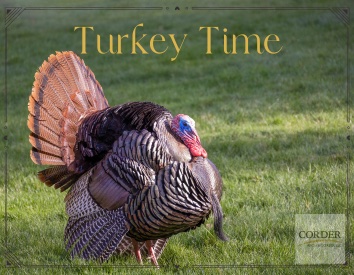Turkey hunting in Montana is like stepping into a Wild West movie! With a whopping 120,000 turkeys strutting around (according to NWTF), easy access, and hunters bagging birds left and right, Montana is the ultimate Western turkey hunting hotspot. And picture this: the moment that turkey strolls into view against Montana’s breathtaking backdrop—pure magic! It’s the perfect place to chase after the king of game birds.
Habitat
Did you know that turkeys were once the new kids on the block in Montana? Lewis & Clark’s diaries missed the gobble-gobble as they trotted through the state since these birds preferred sunnier spots. But hey, thanks to some human kindness and a bit of relocation magic, turkeys got their big break in Montana’s chilly winters. In the ’50s, a turkey transfer operation brought in feathered guests from neighboring states. Fast forward to today, and these wild turkeys are strutting their stuff across the nation, except in Alaska. Montana is now home to a mix of turkey subspecies, with the Merriam’s turkeys taking the lead east of the Continental Divide. Who knew turkeys had such a fascinating migration story?
Turkeys in Montana rely on roost trees for their habitat, typically found in landscapes with wooded ridges, meadows, or river-bottom areas abundant in cottonwoods. Although turkeys might be seen in barnyards and feedlots during winter, they tend to disperse by early April as the season kicks off. Southeastern Montana is well-known for its turkey population, especially in parts of Region 4 and the Missouri Breaks, while river bottoms in Region 3 offer the best opportunity for sightings. The turkey populations can vary significantly each year depending on the previous spring’s weather conditions, so it’s advisable to consult with an FWP biologist for accurate information.
Turkey populations can be found on both public and private lands across Montana. Hunters have had success in areas such as the Long Pines and Ashland regions of Custer National Forest in the southeastern part of the state (despite wildfires affecting the upper third of this habitat in previous years), the Missouri River breaks, and the Charles M. Russell National Wildlife Refuge in central Montana. Additionally, turkeys are present in the Intermountain Valley Region in the western part of the state. Montana’s Block Management Program is available in all seven wildlife regions, with over 8 million acres currently participating. This program is a collaborative initiative between private landowners and Montana Fish, Wildlife, and Parks to aid landowners in managing hunting activities while granting public access to hunt on private lands for free.
Behavior
In the spring, turkeys embark on their very own mountain feast adventure, following the melting snowline for tasty treats. Picture them strutting uphill in a gang led by a swaggering gobbler, a bevy of hens, and a bunch of tag-along “satellite” gobblers. As dawn breaks, they belt out lively calls from their treetop perches before swooping down. Since turkeys can’t see well in the dark, hunters need to go ninja stealth mode to get close and set up before the big reveal. The ladies are the real powerhouses, moving towards the gobbler’s call like they’re on a mission. Sometimes, the gobbler might play hard to get, ignoring calls or rushing straight in like a turkey on a mission. The more hens around, the more likely the gobbler will play it cool. So, patience is key – that gobbler might just strut back hours later for a surprise visit.
Gear
Calling is the essence of spring turkey hunting, and reams have been written about the subject. Try to keep it simple and avoid over-calling. Calls come in a variety of forms, including box calls, slates, and mouth diaphragms. All are effective given the right bird and the right situation. Learn one and stick to it. Most turkey calls are meant to imitate hens, including various yelps, purrs, cackles, and cuts. First, learn the yelp and don’t worry about the rest. Avoid imitating a gobble, which is more likely to call in turkey hunters than turkeys.
Concealment is the second key to successful turkey hunting. Turkeys have remarkable vision and are especially adept at detecting movement. If you can’t sit still, you’re not going to call in many turkeys. Gobblers are also good pattern recognizers, so camouflage is important. Be sure to conceal your hands and face.
Regs
Montana offers both spring and fall turkey seasons, with dates and limits varying by region. In the fall, turkeys are largely targets of opportunity for hunters pursuing other game. Real turkey hunting takes place in the spring when wary males (“toms” or “gobblers”) can be called into close range.
Sounds like a pretty fun way to make memories, right? Having your own Montana hunting land allows you to look forward to each hunting season and share it with those you love. Contact Corder and Associates for assistance in finding the perfect piece of land!




